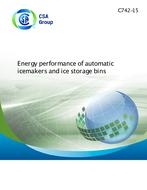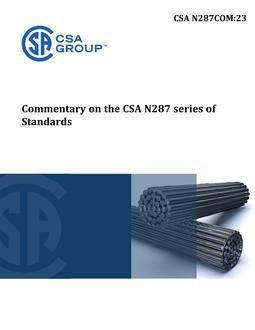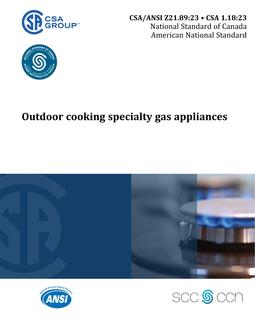
CSA C742-15
- Comments Off on CSA C742-15
- CSA
Preface
This is the fourth edition of CSA C742, Energy performance of automatic icemakers and ice storage bins. It supersedes the previous editions, published in 2008, 1998, and 1994. Changes to this edition include updates for calculation of results for continuous type icemakers with respect to ice hardness. This Standard is compatible with AHRI 810/811, AHRI 820/821, and ANSI/ASHRAE Standard 29. CSA Group acknowledges that the development of this Standard was made possible, in part, by the financial support of Natural Resources Canada (NRCan).
Scope
1.1 This Standard applies to factory-made automatic icemakers with a capacity not exceeding 1814 kg/24 h, measured at standard rating conditions. These machines produce cube, flake, crushed, nugget, or fragmented ice in batches or in a continuous process. They are electrically operated and are designed for a 60 Hz operating current with nominal nameplate voltage. 1.2 This Standard applies to freestanding and integral factory-made manual-scoop-out ice storage bins. 1.3 This Standard specifies requirements and test procedures for energy and water consumption and storage effectiveness. 1.4 This Standard applies to a) self-contained icemakers where the ice-making mechanism and storage compartment are integrated in one cabinet; and b) split-system icemakers that have the ice-making mechanism and condensing unit in separate sections. Note: Condensers can be air- or water-cooled. 1.5 This Standard does not apply to a) icemakers installed in
- i) household refrigerators; ii) refrigerator-freezers; or iii) freezers;
b) automatic ice-dispensing machines; or c) cold-plate drink dispensers. 1.6 The values given in SI units are the units of record for the purposes of this Standard. The values given in parentheses are for information and comparison only. 1.7 In this Standard, “shall” is used to express a requirement, i.e., a provision that the user is obliged to satisfy in order to comply with the standard; “should” is used to express a recommendation or that which is advised but not required; and “may” is used to express an option or that which is permissible within the limits of the Standard. Notes accompanying clauses do not include requirements or alternative requirements; the purpose of a note accompanying a clause is to separate from the text explanatory or informative material. Notes to tables and figures are considered part of the table or figure and may be written as requirements. Annexes are designated normative (mandatory) or informative (non-mandatory) to define their application.
Product Details
- Edition:
- 4th
- Published:
- 10/01/2015
- ISBN(s):
- 9781488301728
- Number of Pages:
- 25
- File Size:
- 1 file , 1.5 MB
- Product Code(s):
- 2424109, 2424370, 2424109, 2424109



